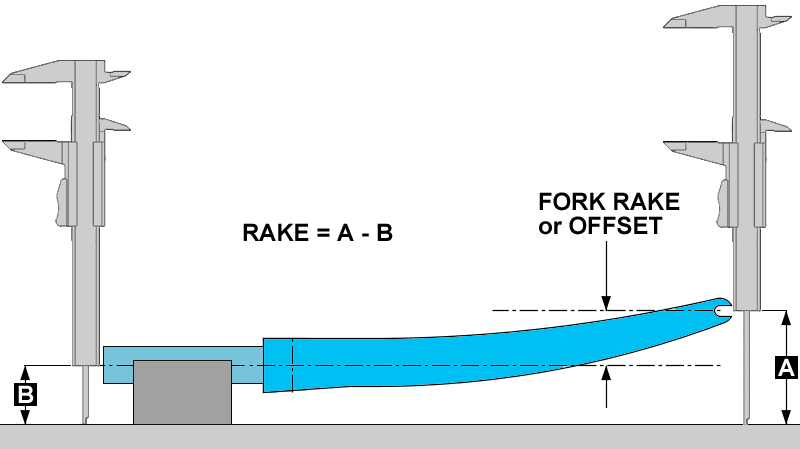In the case of a crash hard enough to buckle a strong front wheel, how should the fork alignment be checked. The bike is a steel tourer and pretty tough.
-
We've got related questions about what to do if it is bent, but searching didn't come up with anything for this.– Chris HCommented Jun 24, 2019 at 13:49
-
Bent in the direction of travel or laterally? (It's not clear to me which way the force of the crash went.)– DavidWCommented Jun 24, 2019 at 14:01
-
@DavidW either/both. I was there and it's not clear to me either.– Chris HCommented Jun 24, 2019 at 14:48
-
As a rule of thumb and in my experience, if you can’t eat with it: it’s bent.– gdgrCommented Jun 24, 2019 at 22:39
-
Not sure if ‘jokes’ are permitted but I felt compelled to say it to somebody if only for my own sanity. Mods if you read this... forgive me– gdgrCommented Jun 24, 2019 at 22:43
2 Answers
I think the two mis-alignment 'modes' you need to check for are:
- Both fork legs pushed back, so that rake is reduced
- Twist between the fork crown and axle axis between the dropouts
To determine if rake is reduced, you'd have to know what it was pre-crash, obviously. If you can take the fork out of the bike measurement is easy - see image below. With the fork in the bike you could set the bike up in a repair stand with the steerer perfectly vertical, them drop plumb lines onto the floor and measure the distance between the lines.
To check for twist, just put two straight edges on the fork, one at the crown, one in the dropouts. Look down the axis of the steerer and check if the edges are parallel.
-
I've got quite a lot of geometry details so may well have the rake or be able to calculate it. It's a bit hypothetical now as I don't be able to mend it until I'm mended - but I won't need it until then either.– Chris HCommented Jun 24, 2019 at 19:42
-
Not having fancy tools, I would check for a bend in the direction of travel by measuring the wheelbase of the bike and comparing it to the original specs. This would work for me, because I've never changed the forks on any bike I've owned, but it may not work for you.
Similarly, not having fancy tools, I would check for lateral bending by putting the bike on a stand, using a plumb line to make sure the down tube is vertical, and then using the line from the centre of the stem to check that it is centred between the front dropouts.

